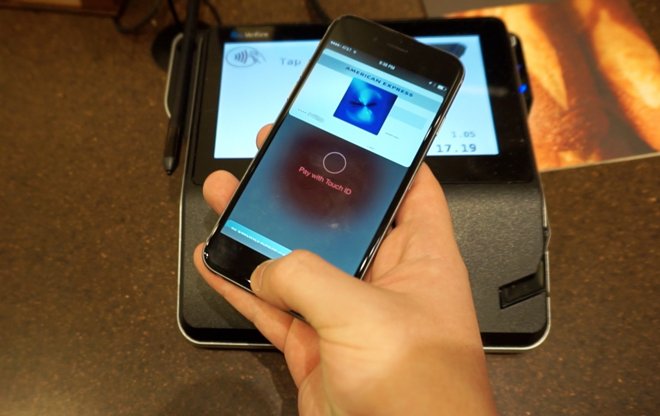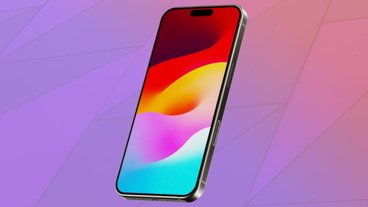According to a study published this week, the number of iPhone owners willing to try out Apple Pay has declined over the past three months alongside a drop in usage rates from both casual and previously committed users.
An ongoing survey conducted by InfoScout in cooperation with PYMNTS.com shows the number of eligible Apple Pay users who tried the service dropped from 15.1 percent in March to 13.1 percent in June. Further, respondents answering yes to the question, "Did you use Apple Pay on this transaction" fell from 39.3 percent to 23 percent over the same period.
"As more and more people buy iPhone 6's we are seeing a lower percentage of them adopting or trying Apple Pay," said Jared Schrieber, CEO of InfoScout. "That shouldn't necessarily be a surprise as we move from people who are early adopters and more likely to try things, to later adopters who are not."
The results can in part be attributed to security concerns, as customers declining to use Apple Pay for this reason jumped from 15 percent to 19 percent. On a related note, it appears poor user experiences are having a detrimental effect on 4 percent of existing users who are no longer willing to use the service out of fear that it might not work.
Apple's customer outreach program also has a long way to go. The number of iPhone owners who have not yet to tried the system because they don't know how it works rose slightly from 31 percent in March to 34 percent in June.
In spite of the seemingly negative survey results, Apple Pay remains one of the most popular touchless payment solutions around, thanks in no small part to iPhone's gigantic install base. For its fiscal third quarter of 2015, Apple reported iPhone sales of As Apple Pay-compatible devices proliferate, Apple is working to expand backend support and just recently passed a milestone by netting support from 400 participating issuers. On the other side of the equation are merchants that are slowly warming to the idea of NFC-based transactions.
It should be noted that the InfoScout survey covers only the U.S. market, a demographic much more familiar with credit card swiping than tap-to-pay. Apple is slowly rolling out Apple Pay internationally as it reaches agreements with major banks and most recently launched the service in the UK. Other regions that have long since integrated touchless payment methods into their respective shopping cultures, like China and Japan, have yet to be tapped.
 Mikey Campbell
Mikey Campbell

-m.jpg)






 William Gallagher
William Gallagher
 Andrew O'Hara
Andrew O'Hara
 Wesley Hilliard
Wesley Hilliard

 Malcolm Owen
Malcolm Owen
 Marko Zivkovic
Marko Zivkovic

 Chip Loder
Chip Loder



-m.jpg)




140 Comments
I used it twice today out of three purchases (including gas where it isn't accepted yet). I keep finding more places to use Apple Pay and I love not having to carry a wallet all the time.
This mostly had to do with the wrong but understandable choice to debut in the US. There are still a lot of American retailers who don't have touchless terminals, so I'm sure it's frustrating not knowing if it's going to work until you get to the front of the line and look at the terminal. Might as well have a card out. Apple Pay is actually much better suited to Canada or certain places in Europe.
Does anyone proofread tech articles for grammatical errors? Pay me a dollar an article & you won't sound nearly as unprofessional. "The number of iPhone owners who have not yet to tried the system because they don't know how it works rose slightly from 31 percent in March to 34 percent in June."
The uptake with retailers is too slow Home Depot use to accept it, now it does not. And it fails at least 75% of the time I try to use it at Panera across multiple locations. And Panera was a launch partner Apple Pay needs some big wins. The pending MCX implosion should help
This mostly had to do with the wrong but understandable choice to debut in the US. There are still a lot of American retailers who don't have touchless terminals, so I'm sure it's frustrating not knowing if it's going to work until you get to the front of the line and look at the terminal. Might as well have a card out. Apple Pay is actually much better suited to Canada or certain places in Europe.
This will change closer to the end of the year when the liability shift happens. Most banks are still in the middle of issuing chip based cards and most large retailers are still transitioning to newer terminals.